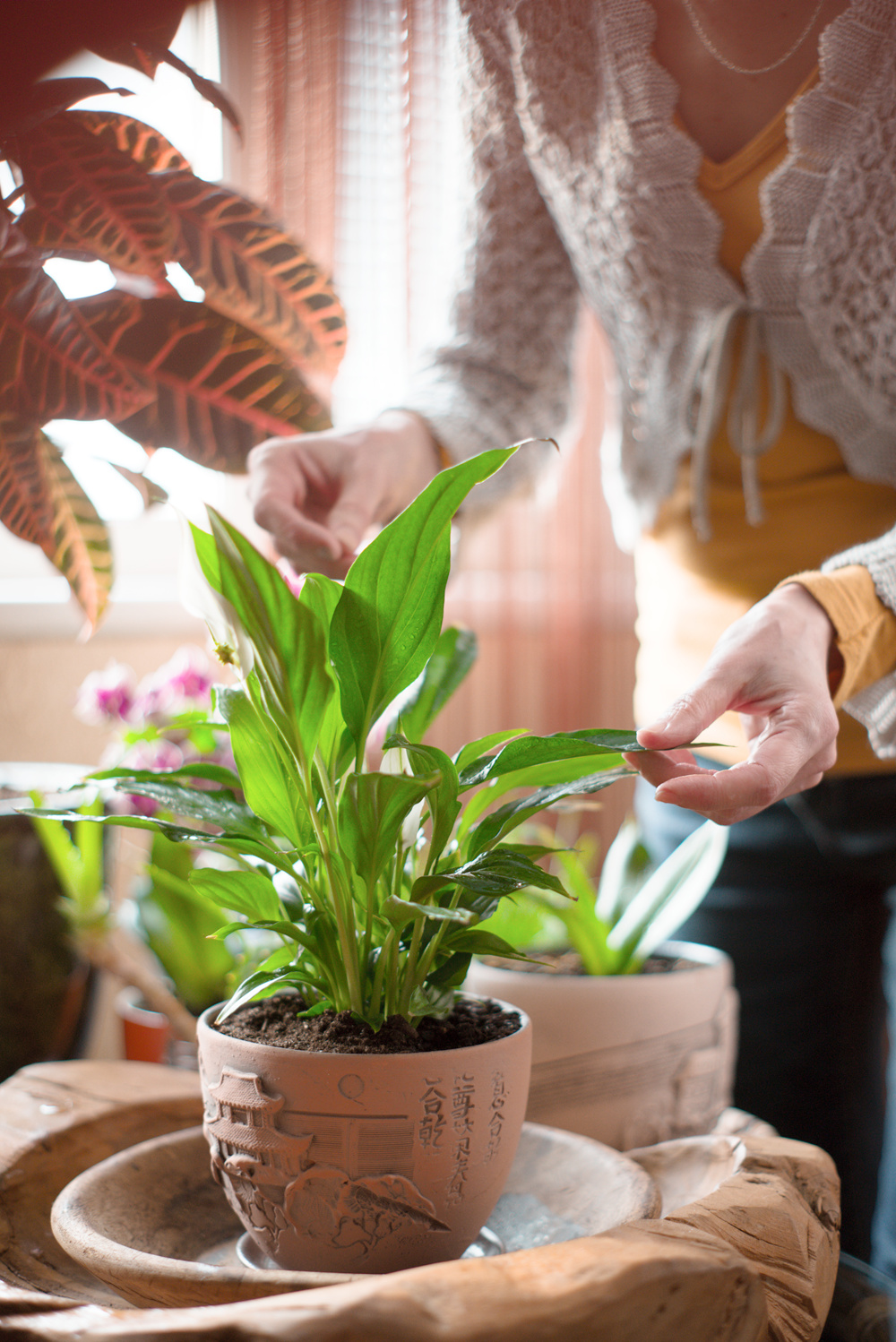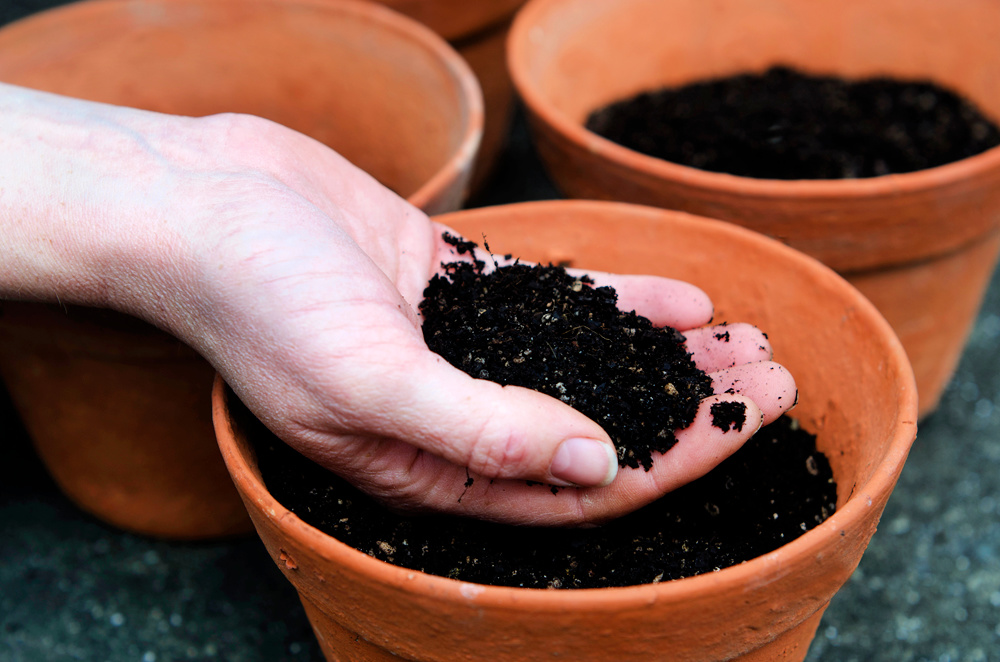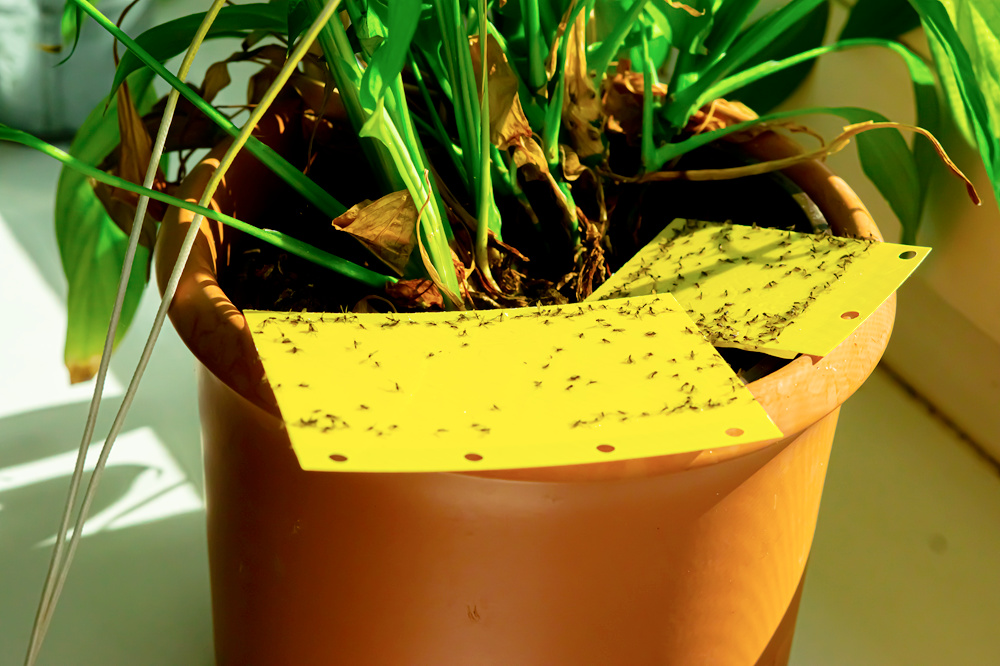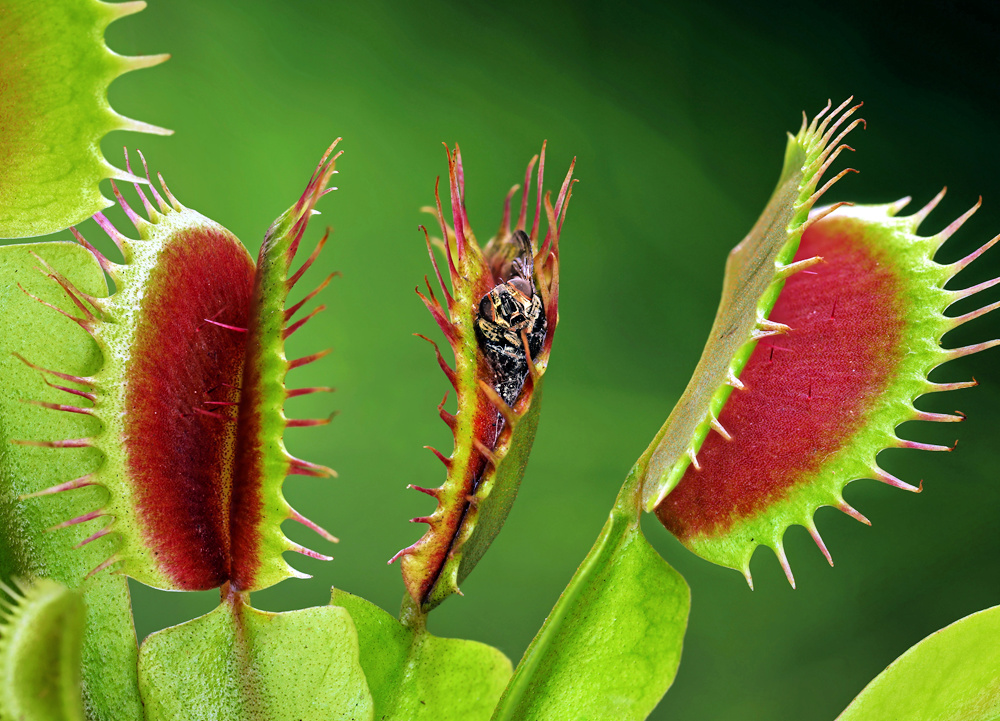Are you tired of dealing with pesky flies buzzing around your indoor plants? Say goodbye to those annoying bugs and keep your plants healthy and thriving when you learn how to prevent flies from indoor plants with these effective tips and tricks.

Flies in indoor plants, particularly fungus gnats, are a common problem that many plant enthusiasts face. These pests are attracted to moist soil not dry soil and organic matter where they lay their eggs, and their larvae feed on fungi, decaying plant material, and even plant roots.
It’s time to banish that fungus gnat infestation and create a pest control environment for your beloved house plants. You owe it to yourself and your plants to keep them free from those annoying flies.
If you are looking for other indoor plant tips, here are a few to check out.
- Tips To Care For Peace Lily Plant & How Often To Water
- How Often Do You Water A Poinsettia – Poinsettias Care Tips
- 11 Best Low Light House Plants
- How To Care For A Christmas Cactus Plant (Aka Schlumbergera or Zygocactus)
- How to Care for a Mother-in-Law’s Tongue (aka Snake Plant)
Let’s take action and keep your indoor plants looking their best! Here are several strategies to prevent and control flies in your indoor plants:
How To Prevent Flies From Indoor Plants When Starting New Plants & Pots:
Preventing flies, especially fungus gnats, from infesting your indoor plants starts at the potting stage. By taking steps to create an environment that’s less inviting to these pests in the first place, you can greatly reduce the likelihood of fly problems.
Take the first step to prevent flies from infesting your indoor plants when potting with these tips:
Use Sterilized Potting Mix:
- Always use a high-quality, sterilized potting mix to pot your plants. Many pests, including fungus gnats, can be introduced through contaminated soil. Avoid using garden soil, which is likely to contain eggs or larvae of pests.
- Sterilized potting mix is a specially prepared growing medium used in gardening and horticulture that has been treated to remove or kill pathogens, pests, and weed seeds. This process helps ensure a healthy environment for plants to grow, reducing the risk of disease and pest infestation. Sterilization can be achieved through various methods, including heat treatment, chemical sterilants, or irradiation.
- Sterilized potting mix is particularly useful for starting seeds, propagating plants, and growing susceptible species that require a pristine growing environment. Whether purchased ready-made or sterilized at home, it’s a valuable tool for ensuring healthy plant growth.
- Nutrient Loss: The sterilization process can sometimes deplete the organic matter and nutrients in the potting mix. It may be necessary to enrich the mix with compost or a balanced fertilizer after sterilization.
DIY Sterilization:
For small quantities, gardeners can sterilize their potting mix at home using an oven or microwave. For oven sterilization, place the moistened mix in an oven-safe container and heat it at 200°F for 30 minutes, monitoring to avoid burning. In a microwave, heat a moistened mix in a microwave-safe container for about 5 minutes on high power, or until the temperature in the center reaches 180°F to 200°F.
However one of the most used home methods of soil sterilization is to use boiling water. DIY soil sterilization with boiling water is a straightforward and chemical-free method to kill pathogens, pests, and weed seeds in your potting mix or garden soil. This method is especially convenient for small batches of soil and doesn’t require specialized equipment beyond what you likely already have in your kitchen.
Here’s how to do it:
- Prepare the Soil: If the soil is compacted or has large clumps, break it up into smaller, more manageable pieces. This ensures more uniform exposure to the boiling water.
- Place Soil in a Heat-Resistant Container: Select a container or area where you can safely pour boiling water over the soil. The container should be able to withstand high temperatures without damage. If you’re treating soil in garden beds directly, ensure the area is clearly defined and accessible.
- Boil Water: In a large pot, bring enough water to a rolling boil. The amount of water needed will depend on the volume of soil you intend to sterilize. It’s better to have more boiling water ready than you think you’ll need.
- Pour Boiling Water over the Soil: Carefully pour the boiling water over the soil, ensuring even coverage. The goal is to saturate the soil thoroughly, allowing the heat to penetrate deeply. For larger areas or volumes of soil, you may need to boil multiple pots of water.
- Monitor Temperature (Optional): If you have a thermometer, you can check the temperature of the soil to ensure it reaches at least 140°F (60°C). This temperature should be maintained for at least 30 minutes to effectively kill most pathogens, pests, and seeds. However, without a thermometer, ensure that the soil is thoroughly saturated with the boiling water, which should suffice for basic sterilization needs.
- Let the Soil Cool: After treating the soil, allow it to cool completely before planting. This could take several hours, depending on the volume of soil and ambient temperature.
- Condition the Soil: Boiling water can kill beneficial microorganisms along with the harmful ones. After the soil has cooled, consider adding compost or a microbial inoculant to reintroduce beneficial organisms into the soil.
Improve Drainage:
- Mix perlite, vermiculite, or coarse sand into your potting mix to improve drainage. Good drainage is key to preventing overwatered conditions that attract fungus gnats.
Choose the Right Pot:
- Use pots with adequate drainage holes to prevent water from pooling at the bottom. Consider using pot covers or saucers to catch excess water, but be sure to empty them after watering.
Apply a Layer of Grit or Sand:
- After potting, apply a top layer of grit, sand, or decorative stones to the soil’s surface. This can discourage adult gnats from laying eggs and can also add an aesthetic touch to your plants.
- Adding a layer of sand or fine gravel on top of the soil can prevent adult gnats from reaching the soil to lay eggs and also hinder newly hatched larvae from reaching the surface.
Incorporate Natural Repellents:
- When potting, you can mix in natural repellents with the soil. Cinnamon, neem cake, and crushed mosquito dunks (Bacillus thuringiensis israelensis – Bti) can be mixed into the potting soil to deter fungus gnats.
Pre-watering with Hydrogen Peroxide:
- Before potting, you can water the soil with a hydrogen peroxide solution (1 part 3% hydrogen peroxide to 4 parts water). This will kill any larvae or eggs present in the soil without harming the plants. Allow the soil to dry slightly before potting.
Use Potting Soil Covers:
- Commercial soil covers designed to prevent fungus gnats are available. These covers provide a physical barrier that prevents gnats from accessing the soil to lay eggs.
Regular Monitoring:
- After potting, keep an eye on the soil moisture level of your soil and the health of your plants. As we have learned excess moisture creates issues. Using yellow sticky traps to monitor for adult gnats is an easy way to see if you have an issue starting and you can take action if you notice an infestation beginning.
Water Carefully:
- Water your plants carefully to avoid overwatering.
- Let the Soil Dry. Fungus gnats thrive in moist environments. Allowing the top layer of soil to dry out between waterings can discourage gnats from laying eggs. Overwatering is a common cause of gnat infestations.
- Consider bottom watering to keep the top layer of soil drier, making it less attractive to fungus gnats. Water your plants from the bottom to encourage roots to grow downward and help the top soil stay drier. Place your plant in a basin of water, letting the plant soak up water through the drainage holes. This method keeps the top layer of soil dry and less attractive to gnats.
Quarantine New Plants:
- Another great idea on how to prevent flies from indoor plants is when introducing new plants to your home, quarantine them for a few weeks to observe for any signs of pests, including flies. This can prevent the spread of pests to your other indoor plants.
The good news is by taking these preventative measures when potting and caring for your indoor plants, you can prevent flies from indoor plants by creating an environment that’s less inviting to flies and other pests. Keeping your plants healthy and your home fly-free.
How To Control Flies In Your Indoor Plants:
If flies or bugs have already infested your indoor plants, it’s crucial to act quickly to control and eliminate them before they cause significant damage or spread to other plants. Here are strategies to manage and eradicate flies and bugs from your indoor plants:
Use Yellow Sticky Traps:
- Place sticky yellow traps near your plants. The adult fungus gnats are attracted to the color yellow of the sticky fly traps and will get stuck in the sticky substance on the traps. This is the best way to catch adult gnats and can help reduce the population. They also work well for catching fruit flies and other pesky insects.
Cinnamon:
- Sprinkle cinnamon on the topsoil. Cinnamon is a natural fungicide and can help kill fungus gnat larvae. It needs to be reapplied periodically, especially after watering.
Hydrogen Peroxide Solution:
- Mix one part of 3% hydrogen peroxide with four parts water and water your plants with the solution. This is an effective way to kill the larvae on contact without harming your plants. Do this once a week until you no longer have a gnat problem.
Neem Oil:
- Neem oil is a natural pesticide that can be effective against fungus gnats. Mix it according to the package directions and apply it to the soil surface. It can deter gnats from laying eggs and kill larvae. You can also use a spray bottle with the mixed solution to spray the plant as well if you are having issues with things like spider mites.
Diatomaceous Earth:
- Apply food-grade diatomaceous earth on top of the soil. This powder is made from the fossilized remains of tiny aquatic organisms called diatoms. It acts as a desiccant, drying out and killing the larvae. Making it one of the great natural remedies to help control tiny flies. You can find it at most garden centers and online.
Soil Drenches:
- Certain biological soil drenches, such as those containing Bacillus thuringiensis israelensis (Bti), can be effective against fungus gnat larvae. These products are harmless to plants and mammals but deadly to mosquito and fungus gnat larvae.
Regular Inspection and Maintenance:
- Regularly check your plants for signs of overwatering and adjust your watering habits as necessary. Remove dead leaves and debris from the soil surface to reduce organic matter that may attract gnats.
Use Carnivorous Plants To Prevent Flies From Indoor Plants:
Using carnivorous plants to control flies and other small pests indoors is an innovative and eco-friendly biological control approach. These plants can be another great natural solution how to prevent flies from indoor plants while adding unique interest to your home.
Here are some carnivorous plants well-suited for indoor environments that can help manage fly populations:
1. Venus Flytrap (Dionaea muscipula)
- The Venus Flytrap is perhaps the most famous carnivorous plant, known for its jaw-like leaves that snap shut when triggered by an unsuspecting insect. They require bright light (a few hours of direct sunlight is beneficial) and moist, acidic soil. They’re particularly good at catching flies, but their need for a dormancy period in winter can make them a bit more challenging for year-round indoor growth.
2. Pitcher Plants (Nepenthes and Sarracenia spp.)
- Pitcher plants come in two main varieties: tropical (Nepenthes) and temperate (Sarracenia). Both types lure insects into their deep cavity (pitcher) filled with digestive fluids. Nepenthes prefer warm, humid conditions and bright, indirect light, making them suitable for a bright indoor setting. Sarracenia, being temperate, can also be kept indoors but might require some special care to meet their dormancy requirements.
3. Sundews (Drosera spp.)
- Sundews are fascinating plants with sticky, glandular leaves that trap insects. When an insect lands on their leaves, it gets stuck to the sticky substance and is eventually digested by the plant. Sundews enjoy bright light and high humidity, which can be achieved in most homes. They’re effective against small flying insects like gnats and fruit flies.
4. Butterwort (Pinguicula spp.)
- Butterworts have sticky leaves that trap and digest insects, using enzymes to break down their prey. They prefer bright, indirect light and like their soil to be kept moist but not waterlogged. Butterworts are particularly effective against small flies and gnats.
Care Tips for Indoor Carnivorous Plants:
- Lighting: Most carnivorous plants require bright, indirect sunlight. A south- or east-facing window is ideal. If natural light is insufficient, consider using grow lights.
- Water: Use rainwater, distilled water, or reverse osmosis water, as these plants are sensitive to minerals and chemicals found in tap water. Keep the soil moist but not waterlogged.
- Soil: Use a soil mix designed for carnivorous plants, usually a blend of sphagnum peat moss and perlite or sand. Do not use regular potting soil, as it can harm these plants.
- Humidity: Many carnivorous plants thrive in high humidity. If your home is dry, you may need to increase humidity around the plants with a pebble tray or humidifier.
- Feeding: There is no need to feed carnivorous plants if they are catching insects. However, if kept in a place where insects are scarce, you might need to feed them small insects manually. Avoid fertilizing them in the traditional sense.
Integrating carnivorous plants into your indoor garden to control flies offers the dual benefits of pest management and the enjoyment of growing these unique and fascinating plants.
However, remember that while they can reduce the number of pests, they might not completely eliminate all indoor flies, especially if there’s a significant infestation. In such cases, additional pest control measures may be necessary.
Implementing these strategies can significantly reduce the number of flies around your indoor plants. Remember, prevention is key to how to prevent flies from indoor plants , so maintaining a proper watering schedule and keeping the plant area clean are crucial steps to avoid infestations.






Leave a Reply